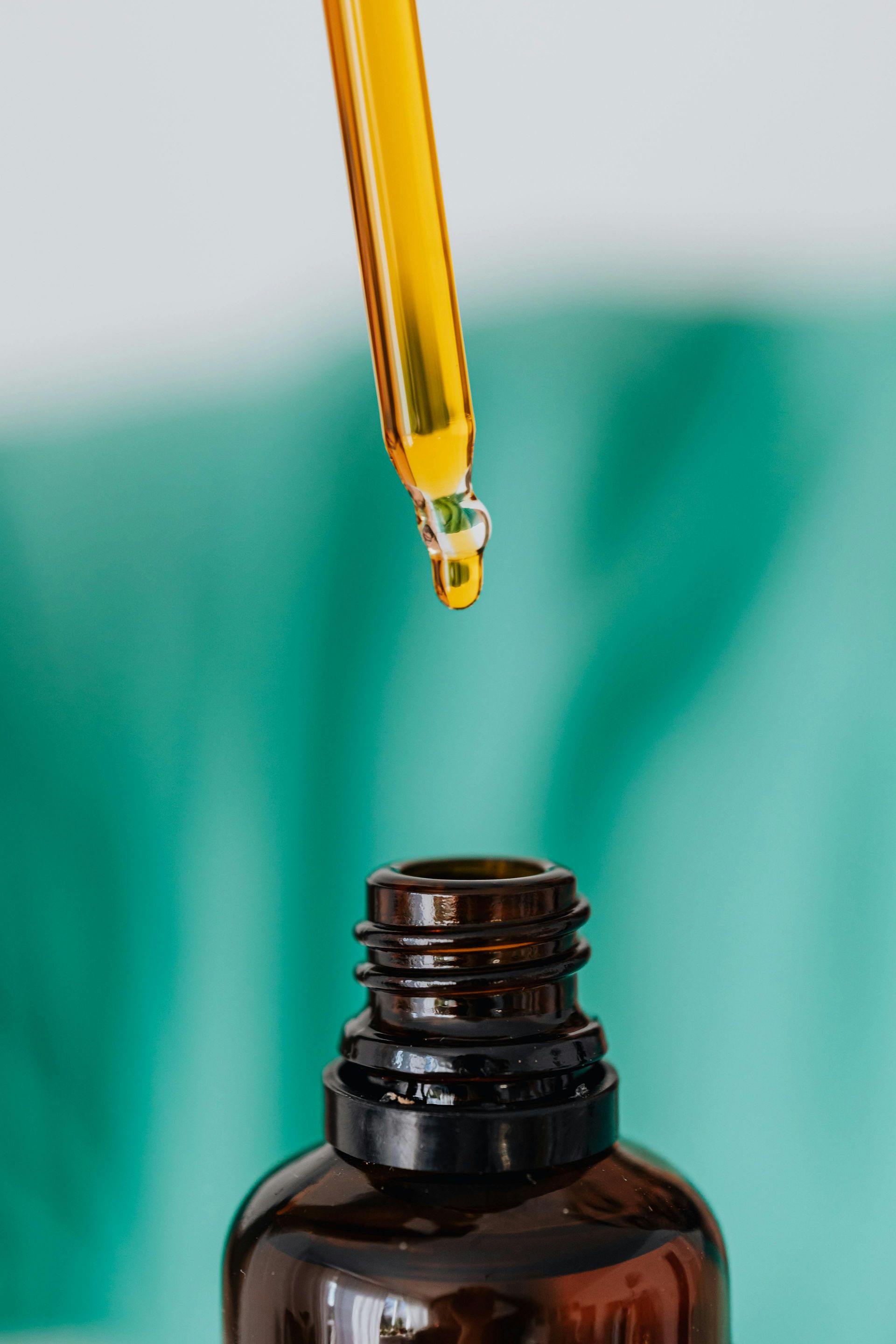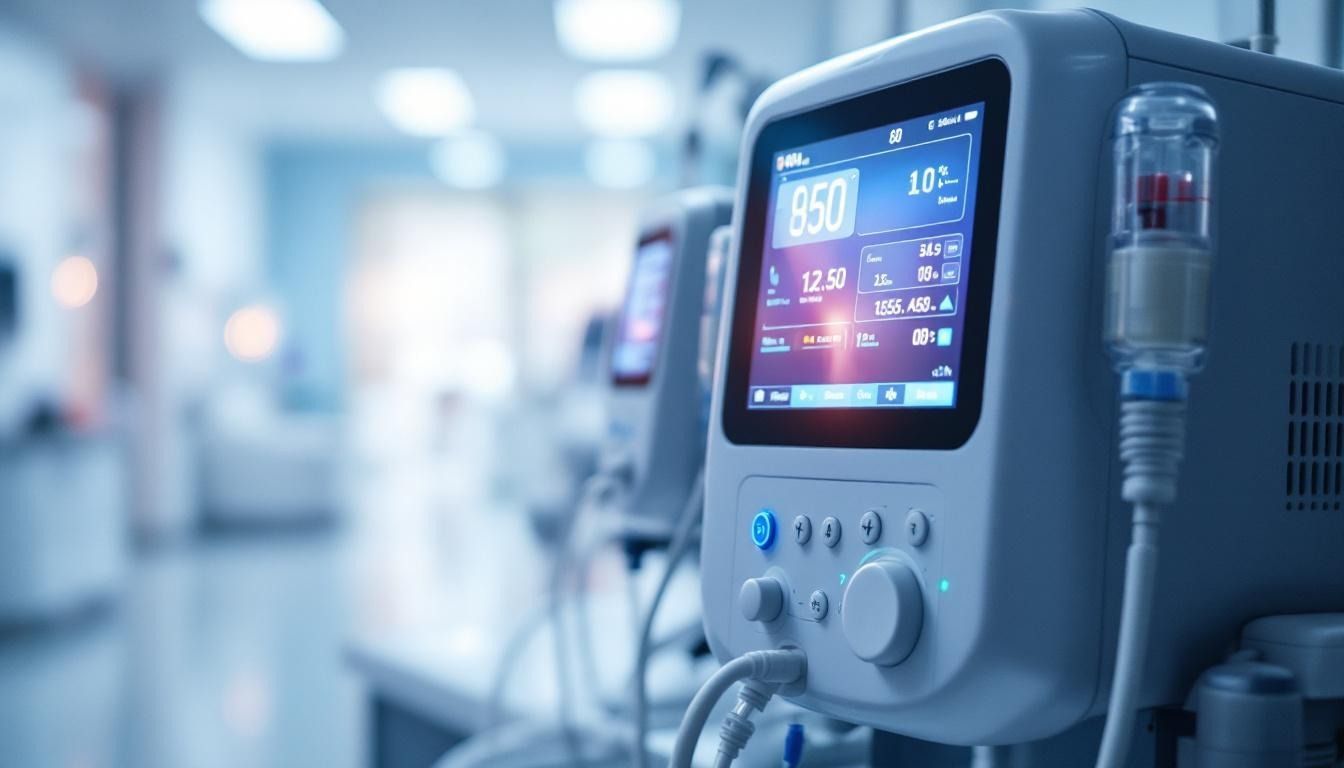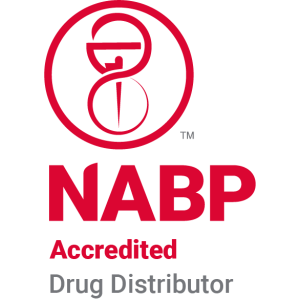Ensuring GLP potency and purity
Introduction to GLP Integrity in Peptide Therapeutics
Maintaining the highest standards of GLP (Good Laboratory Practices) and GMP (Good Manufacturing Practices) is fundamental to ensuring the potency, purity, and safety of peptide therapeutics such as GLP-1. As the pharmaceutical landscape evolves, rigorous analytical techniques and stringent quality control measures become pivotal in safeguarding drug efficacy and patient safety. This article explores the essential components and strategies involved in verifying and maintaining GLP compliance for peptide-based drugs from development through manufacturing.
Fundamentals of Drug Purity and Potency in GLP-1 Therapeutics

What is the difference between drug purity and potency?
Understanding the distinction between purity and potency is essential for the quality control of therapeutic peptides like GLP-1 agonists. Drug purity refers to the proportion of the active pharmaceutical ingredient (API) within a given sample. It is primarily assessed using chromatographic techniques such as high-performance liquid chromatography (HPLC), which detect and quantify the API relative to impurities, residual solvents, or inorganic matter. Ensuring high purity means minimizing contaminants like oxidation products, residual reagents, or hydrolysis by-products.
Potency, however, measures the biological activity or strength of the API. It indicates how effective the drug is at eliciting the desired biological response. Potency is often evaluated through bioassays like cell-based or ligand-binding assays, which are calibrated against reference standards to quantify the active component's functional activity. While purity gives an indication of how free the drug is from harmful impurities, potency confirms that the active ingredient is present at the level needed to achieve therapeutic results.
Both parameters serve different but interconnected roles. High purity ensures safety by reducing the risk of adverse effects from impurities, while adequate potency guarantees the drug’s efficacy. Accurate assessment of both relies on well-characterized reference standards and robust analytical methods, ensuring consistent quality in production.
Designing Reliable and Validated Potency Assays
What are the key requirements for designing an effective potency assay?
Creating a dependable potency assay is fundamental for confirming the biological activity and quality of peptide drugs. An effective assay must accurately reflect the drug's mechanism of action (MoA), which involves understanding how the peptide interacts at the molecular or cellular level to produce a therapeutic effect.
High accuracy and precision are essential to measure the active ingredient consistently across different batches and testing conditions. Specificity ensures the assay exclusively quantifies the target peptide without interference from impurities, degradation products, or other components.
The robustness of an assay refers to its ability to produce reliable results under varied conditions, such as different analysts, equipment, or environmental factors. System suitability criteria, like control charts and thresholds, help monitor assay performance throughout testing.
Development progresses through phases, starting with simple methods like ELISA or ligand-binding assays, then advancing to more complex cell-based or kinetic assays as needed for sensitivity and relevance.
Regulatory compliance guides the validation process, following standards set by organizations such as ICH, USP, or FDA. Validation involves establishing parameters such as accuracy, precision, linearity, range, detection limits, and specificity. This process builds confidence that the assay will produce reliable data for regulatory submissions.
Collaboration with subject matter experts—including biologists, chemists, and regulatory specialists—enhances assay design. Moreover, factors like formulation variability, peptide stability, and detailed knowledge of biological interactions influence assay development.
Ultimately, the goal is to create an assay that offers decision-ready data reflecting the peptide’s potency and safety, supporting product release, stability testing, and regulatory approval.
What is the role of stability testing in potency assessment?
Stability testing is integral to the overall evaluation of peptide drug potency. It assesses how the active ingredient's strength and quality are maintained over time when stored under specified conditions.
By applying stability-indicating analytical methods, such as validated HPLC or MS techniques, stability testing ensures that observed changes in potency are due to actual degradation rather than measurement variability.
These methods are designed to distinguish the intact drug from its potential degradants. Forced degradation studies are often conducted to identify potential breakdown products and verify that the assay can detect changes in potency caused by degradation.
The insights from stability testing inform shelf-life determinations and storage conditions, helping establish beyond-use dates (BUDs) for compounded medications. This process guarantees that patients receive medications with consistent, effective doses throughout their expiration period.
In sum, stability testing supports the quality assurance framework, ensuring that potency remains within acceptable limits over the product's intended lifespan, which is vital for patient safety and therapeutic efficacy.
| Feature | Purpose | Methodology | Standards |
|---|---|---|---|
| Accuracy & Precision | Confirm measurement reliability | Replicate measurements, control samples | ICH Q2(R1) |
| Specificity | Ensure measurement targets only the active peptide | Testing against impurities, degradation | USP, FDA |
| Robustness | Guarantee consistent performance under varied conditions | Variable testing parameters | Validation guidelines |
| System Suitability | Maintain test control during runs | Control charts, threshold criteria | USP |
| Stability-indicating | Confirm ability to detect degradation | Forced degradation studies | USP, ICH |
This comprehensive approach ensures that potency assays are scientifically sound, regulatory compliant, and capable of generating consistent data crucial for peptide drug development and quality assurance.
Analytical Techniques for Assessing GLP-1 Quality

What analytical techniques are used to assess the purity and potency of GLP-1 therapeutics?
Evaluating the quality of GLP-1 therapeutics requires a combination of sophisticated analytical methods to ensure safety, efficacy, and consistency. Chromatography techniques such as reversed-phase High-Performance Liquid Chromatography (HPLC) and Ultra-Performance Liquid Chromatography (UPLC) are primary tools used for purity assessments. These methods effectively separate peptide components, allowing for the detection of impurities, truncations, and oxidation products, as well as assessing the stability and aggregation state of the peptide.
Coupled with chromatography, Mass Spectrometry (MS) plays a crucial role in detailed molecular analysis. MS provides precise molecular weight determination, identification of impurities, and insight into post-translational modifications like glycosylation or amidation. When used alongside chromatography, MS enhances sensitivity and specificity in characterizing peptide composition.
Biological testing through bioassays assesses the functional activity of GLP-1. Cell-based assays measuring cyclic AMP (cAMP) accumulation—using cells expressing human GLP-1 receptors—are standard. These bioassays account for factors such as serum binding effects, providing a realistic prediction of clinical effectiveness.
Integrating these analytical techniques offers a comprehensive overview of GLP-1 quality, ensuring each batch meets stringent safety and efficacy standards for therapeutic use.
What are the guidelines for impurity levels in GLP drug substances?
Regulatory agencies like the International Council for Harmonisation (ICH), U.S. Food and Drug Administration (FDA), and European Medicines Agency (EMA) establish clear guidelines for impurity levels in drug substances, including GLP-1 therapeutics. Impurity control is vital because impurities can impact safety and effectiveness.
Impurities are categorized into groups such as organic impurities, inorganic impurities, and residual solvents. Each category has defined permissible limits that depend on the drug’s maximum daily dose. These limits are set based on toxicological data, with strict thresholds for reporting, identification, and qualification.
Analytical validation is essential to ensure impurity detection methods are specific, sensitive, and accurate. Techniques like HPLC coupled with MS are used to identify and quantify impurities when they exceed certain thresholds.
Impurities above these thresholds must be characterized to evaluate potential toxicity or impact on product stability. For mutagenic impurities or degradants, frameworks like ICH M7 set limits based on safety assessments, such as Permissible Daily Exposures (PDEs).
Qualification entails demonstrating that impurities are either naturally occurring degradation products or are introduced during manufacturing, with safety profiles supported by toxicology or clinical data. These guidelines help manufacturers maintain high-quality standards, ensuring patient safety.
| Aspect | Description | Regulatory References |
|---|---|---|
| Impurity Categories | Organic, inorganic, residual solvents | ICH Q3A, Q3B, Q3C |
| Thresholds | Varies based on dose | ICH Q3A, Q3B |
| Validation Needs | Specificity, sensitivity, reproducibility | ICH Q2(R1) |
| Qualification | Safety assessment of impurities | Toxicological data, literature |
By adhering to these standards, manufacturers can produce GLP-1 drugs that meet safety requirements across different stages of development and production.
Regulatory and Manufacturing Strategies for Ensuring Quality

Why is GLP and GMP compliance important in peptide drug development?
GLP (Good Laboratory Practices) and GMP (Good Manufacturing Practices) are fundamental in the development and production of peptide drugs. Compliance with these standards guarantees that products meet strict safety, purity, and efficacy criteria, which are critical for patient safety and therapeutic effectiveness.
GMP ensures that manufacturing processes are defined, validated, and consistently followed — covering all aspects from raw materials to final packaging. This includes controlled environments, calibrated equipment, and detailed record-keeping, which together help maintain product uniformity and traceability.
GLP regulations oversee nonclinical safety testing, such as toxicity and stability studies, ensuring that data used for regulatory submissions are reliable and reproducible. This helps in risk assessment and supports the approval process.
Together, adherence to GLP and GMP mitigates risks, supports regulatory compliance, and boosts confidence among healthcare providers and patients in peptide therapeutics. This quality foundation is vital, especially when developing complex biologics like GLP-1 agonists.
How can manufacturing processes ensure the quality of GLP-1 drugs?
Manufacturing high-quality GLP-1 drugs involves a combination of validated production techniques and rigorous analytical testing. Solid-phase peptide synthesis is used to assemble the amino acid chains accurately, followed by purification steps like high-performance liquid chromatography (HPLC) and mass spectrometry (MS) to verify purity and correct sequence.
Implementing strict control measures ensures that post-translational modifications such as amidation or glycosylation are correctly added, which are crucial for biological activity. Maintaining validated manufacturing protocols and documenting every step helps guarantee batch-to-batch consistency.
Advanced manufacturing technologies, such as continuous processing, can improve control over production variables, reducing defects and variability. Regular process validation and re-qualification are crucial, along with comprehensive in-process testing.
Raw material qualification is vital; all amino acids, reagents, and solvents are sourced from FDA-registered suppliers, tested for identity and purity before use. Proper equipment calibration and cleanroom environments prevent contamination.
Once production is complete, final products undergo extensive testing, including sterility, endotoxin levels, and potency assessments. Implementing rigorous storage and distribution standards—like cold chain management—ensures the drug remains effective until administration.
Overall, robust process controls, thorough testing, and strict adherence to regulatory standards are central to producing safe, effective GLP-1 medications.
Raw material qualification and testing
The foundation of a high-quality peptide drug begins with the raw materials. All amino acids, reagents, and solvents used in synthesis must originate from FDA-registered suppliers who comply with cGMP (Current Good Manufacturing Practices). This ensures these inputs meet established specifications for identity, purity, and stability.
Material testing includes verifying the chemical composition, checking for impurities, and confirming the absence of contaminants such as endotoxins or microbial agents. Certificates of Analysis (COA) are reviewed for each batch of raw materials, serving as traceability documentation.
Supplier qualification is also crucial; manufacturers conduct audits and ongoing evaluations of suppliers to ensure consistent quality. Incoming raw materials are sometimes retested in-house before use to detect any deviations or contamination.
Maintaining a rigorous raw material control program helps prevent variability and ensures that the synthesized peptide retains its intended structure and biological activity.
Batch validation and documentation
Batch validation encompasses a series of tests and procedures that confirm each manufacturing run produces a product meeting predefined standards.
This process includes in-process controls—such as monitoring pH, temperature, and reaction times—as well as final testing for purity, sequence verification, post-translational modifications, and absence of impurities or residual reagents.
Comprehensive documentation, including batch records, test results, calibration logs, and deviation reports, forms the backbone of GMP compliance. These records ensure traceability and facilitate audits or investigations.
Moreover, validation supports regulatory submissions by demonstrating that manufacturing methods are reliable and produce consistent products. It also provides a framework for ongoing quality assurance, continuous process improvement, and prompt detection of any issues.
Regular review and update of batch validation procedures, along with staff training, help sustain high manufacturing standards essential for peptide drug safety and efficacy.
Ensuring the Integrity of Raw Materials and Manufacturing Processes

Supplier qualification
Ensuring high-quality peptide production begins with sourcing raw materials from reputable suppliers. It is essential to verify that active pharmaceutical ingredients (APIs) and reagents come from FDA-registered facilities that adhere to Current Good Manufacturing Practices (cGMP). Proper supplier qualification includes reviewing their certifications, audit reports, and Certificates of Analysis (COAs) to confirm that raw materials meet specified standards. Using approved suppliers reduces the risk of contamination, impurities, or substandard ingredients entering the manufacturing process.
Raw material testing
Once raw materials are received, they must undergo rigorous testing to verify their identity, purity, and potency. Common tests include chromatography (HPLC or MS) for composition, sterility tests, endotoxin assessments, and stability evaluations. These procedures are designed to detect any deviations or contaminants that could compromise the final peptide product. Regular testing contributes to maintaining high quality throughout production and ensures that the materials used are within specified parameters.
Equipment calibration
Accurate and reproducible peptide synthesis depends on properly calibrated equipment. Routine maintenance and calibration of reactors, chromatographs, pH meters, and other critical instruments are vital. Calibration ensures that temperature, pH, pressure, and other process parameters are within controlled limits, reducing variability in production. Maintaining detailed calibration records not only guarantees consistency but also supports compliance with GMP standards.
Process validation
Validation of manufacturing processes is essential to produce peptides consistently with high purity, correct sequence, and desired bioactivity. Process validation involves defining critical parameters—such as reaction times, temperatures, and reagent concentrations—and confirming that operating procedures reliably produce a product meeting predefined specifications. This includes in-process testing and final product verification, ensuring each batch meets quality standards and minimizes the risk of impurities or variability.
Documentation and training
Thorough documentation is a cornerstone of GMP compliance. All manufacturing activities, including raw material qualification, testing, equipment calibration, and process validation, must be meticulously recorded. These records serve as proof of adherence to regulatory standards and support traceability.
Equally important is ongoing training of personnel involved in peptide synthesis and quality control. Regular training ensures staff remain knowledgeable about current procedures, GMP guidelines, and best practices in contamination prevention, data integrity, and equipment handling. Well-trained staff are better equipped to detect and address issues promptly, maintaining the integrity of the manufacturing process.
| Aspect | Responsible Party | Critical Activities | Records Maintained |
|---|---|---|---|
| Supplier qualification | Quality Assurance | Supplier audits, certifications, COAs | Qualification report, supplier list |
| Raw material testing | Quality Control | Identity, purity, potency tests | Testing reports, certificates |
| Equipment calibration | Maintenance Team | Calibration logs, standards | Calibration certificates, maintenance logs |
| Process validation | Manufacturing | Defining and confirming critical parameters | Validation protocols, batch records |
| Documentation and training | Quality System | Recording all activities, personnel training | Training records, SOPs, batch documentation |
By implementing strict protocols across these areas, peptide manufacturing facilities can uphold high standards of quality and safety, ensuring the final therapeutic products are both effective and safe for patient use.
The Importance of Regulatory Oversight and Patient Safety

What are the guidelines for impurity levels in GLP drug substances?
Guidelines for impurity levels in GLP drug substances are established by regulatory bodies such as the International Conference on Harmonisation (ICH), the U.S. Food and Drug Administration (FDA), and other agencies. These guidelines focus on the classification, detection, qualification, and control of impurities to ensure drug safety and efficacy.
Impurities are grouped into categories like organic impurities, inorganic impurities, and residual solvents. Each category has specific thresholds that determine whether the impurity should be reported, identified, or qualified. For example, impurities exceeding certain limits must be characterized through validated analytical procedures that confirm their identity and quantify their levels.
Manufacturers set specifications for drug substances based on safety data, considering maximum daily dose and exposure limits. Impurities deemed mutagenic or toxic require particular attention, guided by frameworks such as ICH M7, which defines acceptable limits for mutagenic impurities. This process involves toxicological assessment, sometimes utilizing Permissible Daily Exposures (PDEs), to establish acceptable impurity levels. Demonstrating the safety, formation, and metabolic relevance of impurities is integral to ensuring high-quality drug substances.
Why is GLP and GMP compliance important in peptide drug development?
Good Laboratory Practice (GLP) and Good Manufacturing Practice (GMP) are foundational standards in peptide drug development that safeguard quality and safety. GMP mandates well-defined, validated production processes, strict control of raw materials, and comprehensive documentation to ensure product consistency.
In addition to controlling manufacturing environments through facility validation, GMP requires calibration of equipment, strict personnel training, and ongoing quality control testing during production. These measures prevent contamination, cross-contamination, and batch variability.
GLP standards oversee nonclinical safety testing, ensuring that animal studies and other preclinical evaluations produce reliable, reproducible data. Adherence to GLP enhances confidence in safety profiles and supports regulatory approvals.
Together, GLP and GMP compliance minimize risks, uphold regulatory standards, and build trust in peptide therapies by demonstrating that quality and safety are maintained at every development stage.
How can manufacturing processes ensure the quality of GLP-1 drugs?
To ensure the quality of GLP-1 drugs, manufacturing processes must incorporate validated techniques such as solid-phase peptide synthesis, followed by high-performance liquid chromatography (HPLC) and mass spectrometry (MS). These analytical methods verify peptide purity, correctness of the amino acid sequence, and the presence of necessary post-translational modifications like amidation or glycosylation.
Strict adherence to GMP guidelines involves rigorous process validation, comprehensive documentation, and ongoing in-process and final product testing. Regular impurity profiling and stability assessments help identify variability or defects early, preventing compromised products from reaching patients.
Integrating advanced manufacturing technologies like continuous processing can improve control and reproducibility while reducing waste. Ensuring the integrity of GLP-1 drugs involves robust storage practices, such as cold chain management, and real-time monitoring during distribution.
Consistent supply chain traceability, combined with meticulous quality control, ensures that each batch meets safety and efficacy standards, ultimately protecting patients and maintaining clinical confidence.
Conclusion: Upholding the Standards for Safe and Effective Peptide Therapies
Ensuring GLP potency and purity in peptide therapeutics is a multifaceted endeavor that requires meticulous analytical assessment, rigorous manufacturing controls, and strict regulatory compliance. Accurate identity verification, impurity profiling, and robust potency testing—using validated methods such as cell-based bioassays and advanced chromatography—are the cornerstones of high-quality drug production. Maintaining consistency across all phases, from raw material qualification to final product testing, guarantees the safety and efficacy of therapies like GLP-1. As the regulatory landscape continues to evolve, adherence to GLP and GMP standards remains critical in advancing novel therapeutics and safeguarding patient health. Continuous quality improvement, informed by scientific insights and technological advancements, will be essential to uphold the integrity of peptide and biologic drugs.
References
- Ensuring Quality and Efficacy of GLP-1 Agonists - Emery Pharma
- The Truth About Compounded GLP-1s That Doctors Need to Know
- What quality grade labeled compounds do you need in your trials?
- Beware of Grey Market GLP-1s: How to Ensure Your Compounded ...
- Comprehensive Guide to Potency Assay for Drug Lot Release
- The Truth About Compounded GLP-1s That Doctors Need to Know
- Are compounded GLP-1 drugs safe? - TechTarget
- Key Considerations for GMP Compliance in Peptide Drug Quality ...













